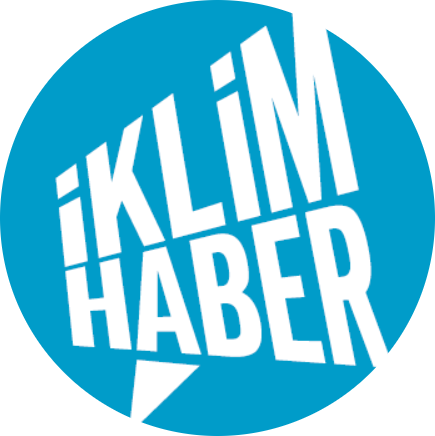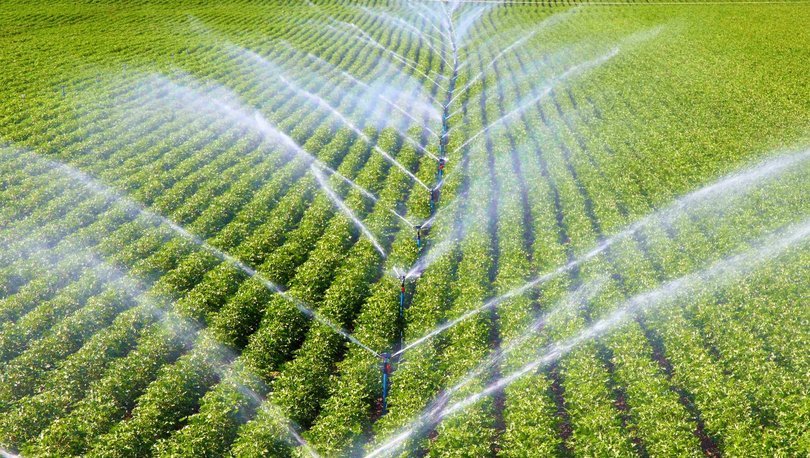The government needs to give more support to new pressurized irrigation methods which will result in saving water in agriculture and reducing water usage to the target percentage. It is also essential to have a monitoring and evaluation system to make sure that water is not being wasted.
TEXT: Tuana Tantur
Water scarcity is one of the major problems the world is facing right now, in 2021. Water consumption continues to increase at more than twice the rate of the world population increase, and water scarcity already affects more than 40 percent of the global population (UNDP). Turkey is one of the countries affected by this problem. Turkey’s water consumption increases each day; however, the precipitation rate is decreasing with increasing climate change. The main cause of this problem in Turkey is shown to be agricultural irrigation. Water is a limited resource that will eventually run out, therefore there is a need to improve the way we use this finite resource.

As shown in Figure 1, Turkey’s mean annual precipitation is 450 billion cubic meters.219 billion cubic meters evaporate, and 45 billion cubic meters are collected in aquifers. Surface water is estimated to be 181 billion cubic meters with rivers and lakes. An additional 6 billion cubic meters come from neighboring countries which makes Turkey’s gross water potential 231 billion cubic meters.
Taking into consideration the economic and physical limitations, Turkey’s annual exploitable water potential, nevertheless, is estimated to be 112 billion cubic meters of which 94 billion is surface and 18 billion is groundwater.
Graph 1 shows, the annual water consumption was 54 billion m3 in 2016 which indicates that Turkey uses approximately 50 percent of its exploitable water potential. Among these water-consuming sectors, irrigation has the highest share with 74% of the total water use. 13% of the total water is used for domestic purposes and the remaining 13% in industry. These percentages are equivalent to 40 billion m3 of water used for irrigation, 7 billion m3 for domestic water, and 7 billion m3 for the industry in the year 2016. (Percentages remained the same in 2020 according to SUEN.)

Falkenmark Index classifies countries according to the amount of water potential per capita per year. Thus, it measures scarcity “as the amount of renewable freshwater that is available for each person each year” (White). If the water amount is above 1,700 m3 per capita, there is no water stress in this country; if it is below 1,700 m3 and above 1,000 m3, that country is experiencing water stress and as such.

In 2000, Turkey had no stress regarding water as it had a 4,000 m3 water potential per capita. However, Turkey is now a country with water stress since it has a water potential of 1,400 m3 per capita per year (TURKEY’s). The Ministry of Foreign Affairs predicts that “by the year 2030 [water] amount will decline to 1,000 m3 per capita/year with an expected population of 100 million.” Taking into account this prediction, in 9 years Turkey will be experiencing water scarcity.
Water Loss in Turkey is mainly because of Surface Irrigation
Belgin Çakmak and Sertan Avcı (Ankara University, Faculty of Agriculture, Department of Farm Structures and Irrigation) write “In irrigation networks where open channels and canals are used, water losses are quite high. To avoid losses, a piped water distribution network is being used in new irrigation projects. Therefore, in pipe systems; water loss is minimized, and water saved better. In terms of irrigation methods, the most water loss occurs in 35-60% of surface irrigation methods. In drip irrigation water loss is minimal and ranges from 5% to 20%. In order to reduce water loss in agriculture and to be used in sectors where there is water stress in saving water, it is necessary to spread sprinkler and drip irrigation” (173).
Water used in agriculture is one of the main causes of water stress in Turkey. By looking at the water loss percentages, although %74 of the total water is consumed by the agriculture sector, irrigation is not as efficient as it should be. The main cause for low irrigation is conventional irrigation techniques. The biggest waste in agricultural irrigation is shown as surface irrigation, in which the farmers pour water on the land in an excessive manner. Surface irrigation can cause from 35% up to 60% water loss; meanwhile, using drip irrigation (a type of system that saves water and nutrients by allowing water to drip to the roots of plants, either from above the soil surface or buried below the surface with a goal of placing water directly into the root zone and minimizing evaporation.) systems will cause from 5% to 20%.
According to DSİ’s (State Hydraulic Works) calculations, the savings to be achieved by switching to the drip system instead of using surface irrigation exceed 65 percent (Demir). An example of an efficient irrigation method is Israel’s drip irrigation method with a piped water distribution network. The Israeli system “consists of valves that control the drops of water and [they] have to be very precisely spaced along the irrigation lines” (Drip Irrigation in Israel). This means the Israeli method aims to use the water most efficiently in a desert landscape; whereas Turkey’s most common irrigation method, surface irrigation, is not as efficient and wastes more water.

Israel uses drip and micro-irrigation methods to irrigate all of its agricultural lands. The aforementioned information about Israel also reveals that by using 100% drip and micro-irrigation methods Israel is able to waste too little water (Çakmak and Avcı 173). On the other hand, France with a percentage of 95, and Egypt with a percentage of 62 follow
Israel in drip and micro-irrigation methods. The United States irrigates half of its land with drip and micro-irrigation, while both Italy and Spain irrigate 45% of their land with these methods. However, less than 10% of the irrigable areas in Turkey are irrigated with pressurized irrigation.
What do authorities think about it?
Nalan Azizoğlu, a geological engineer at State Hydraulic Works, says the water problem is “urgent, and requires immediate attention.” She emphasizes that not only the government should take action but also the civil people should be informed about the problem. She tells that “the government is not supporting the irrigation sector as much as it should.” She also adds that she’s met many farmers who are constrained by the water problem.
What should be done to save Turkey from this water scarcity?
Freshwater is a precious resource that is now considered to be of strategic importance. Climate change, rapid urbanization, industrialization, and population growth are causing Turkey to be a water-scarce country. Considering the fact that water is a limited resource, it is essential to use water efficiently in Turkey’s agriculture. However, methods like surface irrigation cause water to be lost in great amounts when it is needed the most. Therefore, pressurized irrigation systems are necessary in order to save water. Nevertheless, farmers don’t prefer to use these systems since they are relatively expensive to install. Agricultural expert Uzundumlu states in Turkey, agriculture has great importance as it “meets the society’s food needs, provides raw material to the industry sector, contributes to export and creates employment opportunities” (34). In the past, Turkey was a country that was capable of meeting its agricultural needs on its own. However, now it imports some products from other countries. This is partly because the given support for irrigation is not enough. Therefore, the government needs to give more support to new pressurized irrigation methods which will result in saving water in agriculture and reducing water usage to the target percentage. It is also essential to have a monitoring and evaluation system to make sure that water is not being wasted.
Works Cited
– Çakmak, Belgin, and Sertan Avcı. “Supports Provided to Irrigation Systems in Turkey.” Nevşehir. Bilim ve Teknoloji Dergisi, 2017. DergiPark, doi.10.17100/nevbiltek.332091. Accessed 11 May 2021.
– Demir, Yusuf. “Tarımdaki Su İsrafı Korkutuyor” [“Water Waste in Agriculture Scares”]. Sözcü, 17 Dec. 2020. Sözcü Gazetesi, www.sozcu.com.tr/hayatim/yasam-haberleri/tarimdaki-su-israfi-korkutuyor/. Accessed 11 May 2021.
– “Figure 1. Overall Water Budget of Turkey.” Devlet Su İşleri, Mar. 2020, drive.google.com/file/d/1OskDLzagSB9BTUVWTlX_GR337KDqOEJh/view. Accessed 11 May 2021. Table.
– “Goal 6: Clean Water and Sanitation.” United Nations Development Programme, 2021, www1.undp.org/content/seoul_policy_center/en/home/sustainable-development-goals/goal-6-clean-water-and-sanitation.html#:~:text=Facts%20and%20figures&text=Water%20scarcity%20affects%20more%20than%2040%20percent%20of%20the%20global,figure% 20is%20projected%20to%20rise. Accessed 11 May 2021.
– “Graph 1. Sectoral Water Consumptions in Turkey.” Devlet Su İşleri, Mar. 2020, a. Accessed 11 May 2021. Chart.
– “Graph 3. Percentages of Drip and Micro Irrigation Methods Used in Different Countries.” DergiPark, 2017, dergipark.org.tr/tr/download/article-file/388413. Accessed 11 May 2021. Chart.
– “Irrigation Methods.” Israel Agro, www.israelagro.com/drip-irrigation-israel/. Accessed 11 May 2021.
– Ruess, Paul. “Table 1. Water stress index proposed by Falkenmark, 1989.” The University of Texas at Austin, 2015, www.caee.utexas.edu/prof/maidment/giswr2015/TermProject/Ruess.pdf. Accessed 11 May 2021. Table.
– TURKEY’s 2nd VNR 2019 SUSTAINABLE DEVELOPMENT GOALS “Strong Ground towards Common Goals. Sustainable Development, sustainabledevelopment.un.org/content/documents/23862Turkey_VNR_110719.pdf. Accessed 11 May 2021.
– “Turkey’s Policy on Water Issues.” Republic of Turkey Ministry of Foreign Affairs, www.mfa.gov.tr/turkey_s-policy-on-water-issues.en.mfa. Accessed 11 May 2021.
– Uzundumlu, Ahmet Semih. “Tarım Sektörünün Ülke Ekonomisindeki Yeri ve Önemi” [“The Place and Importance of the Agricultural Sector in the Country’s Economy”]. Alınteri, pp. 34-44. DergiPark, dergipark.org.tr/tr/download/article-file/26293. Accessed 11 May 2021.
– White, Chris. “Understanding Water Scarcity: Definitions and Measurements.” Global Water Forum, 7 May 2012, globalwaterforum.org/2012/05/07/understanding-water-scarcity-definitions-and-measure ments/. Accessed 11 May 2021.





